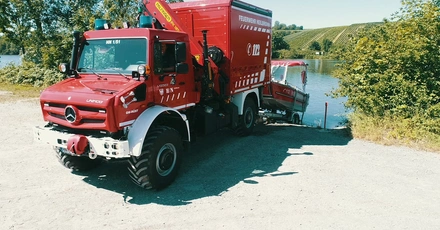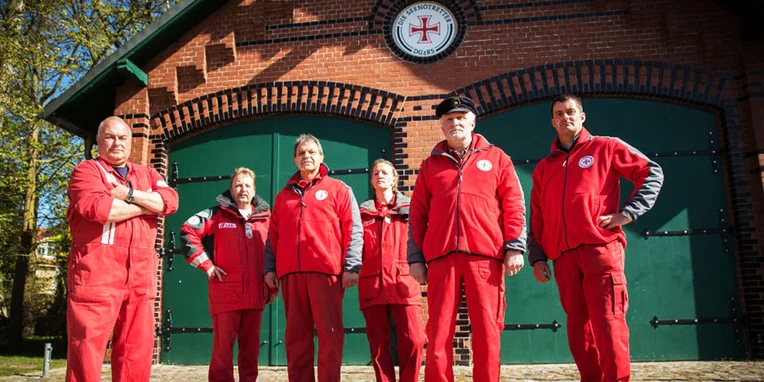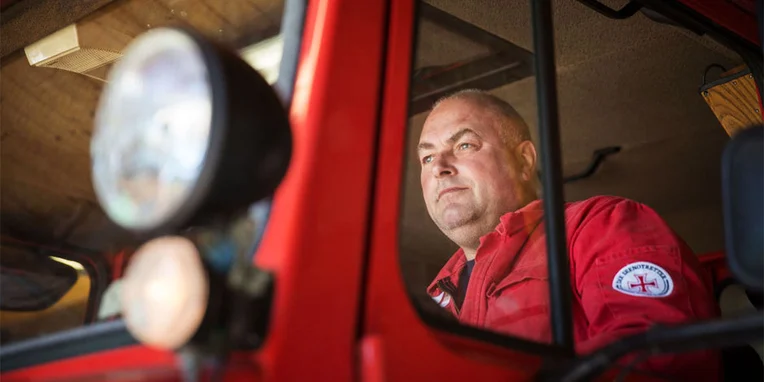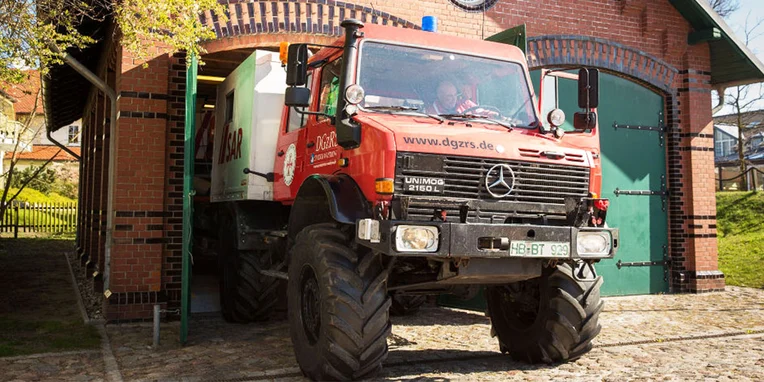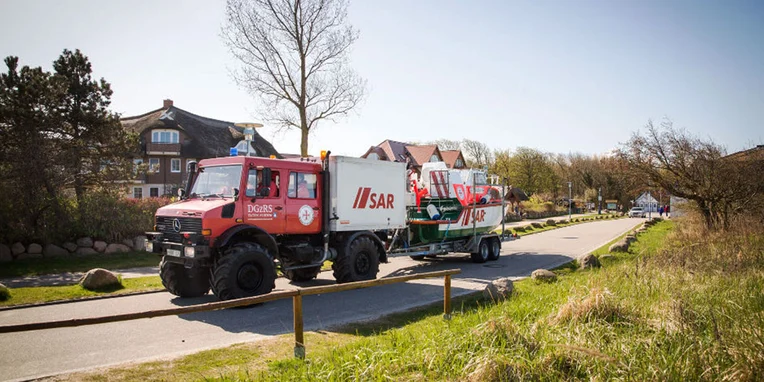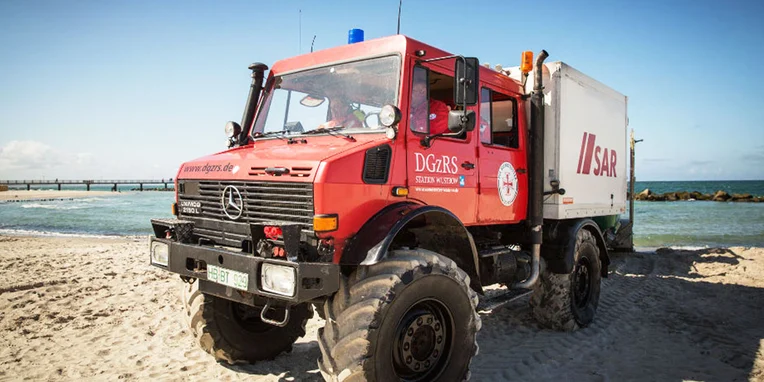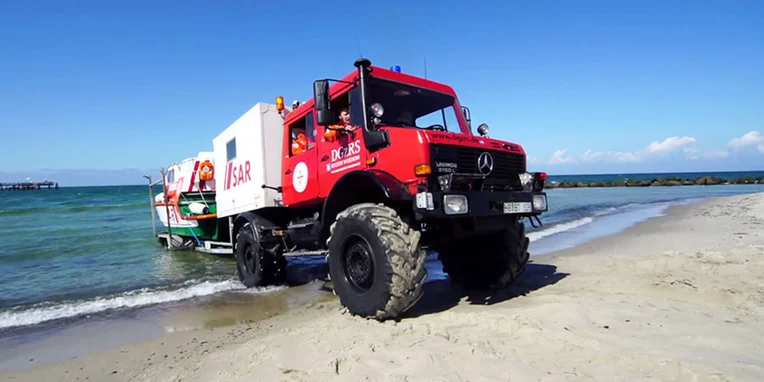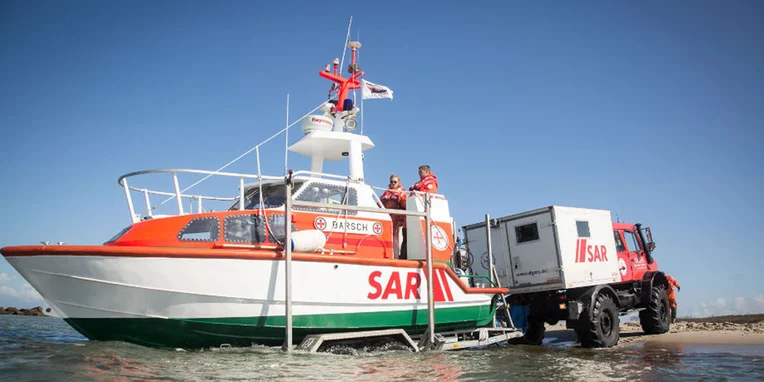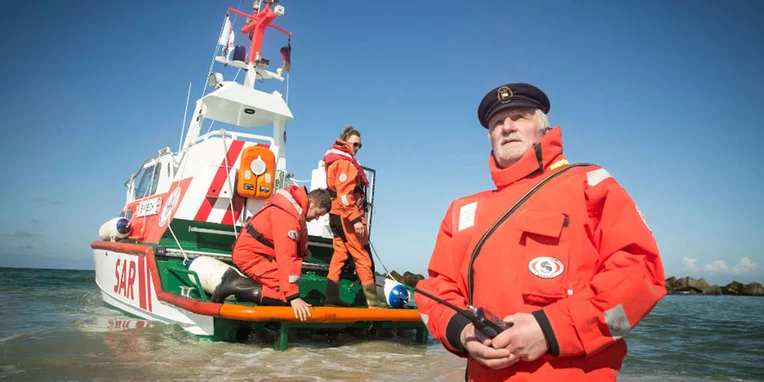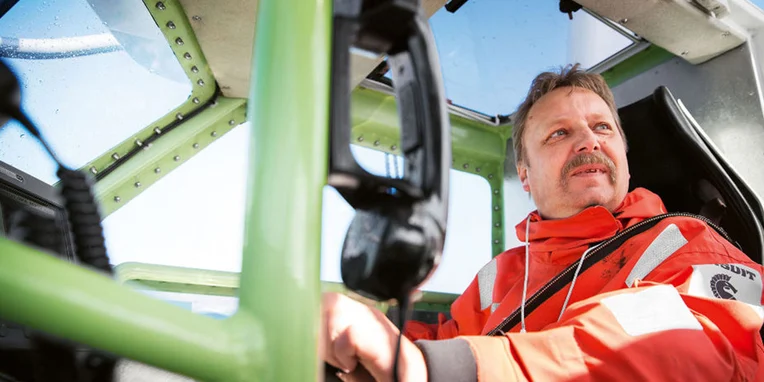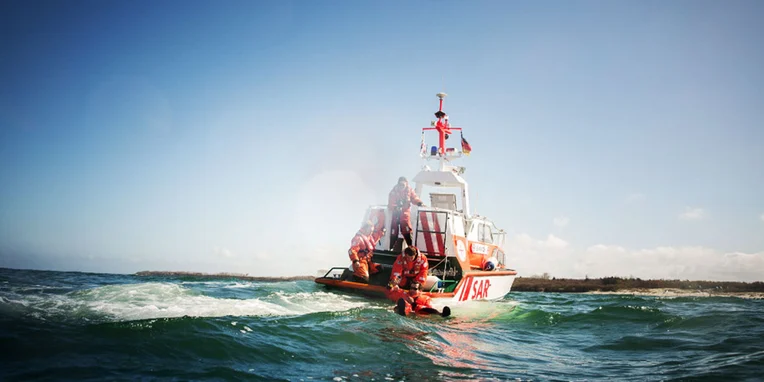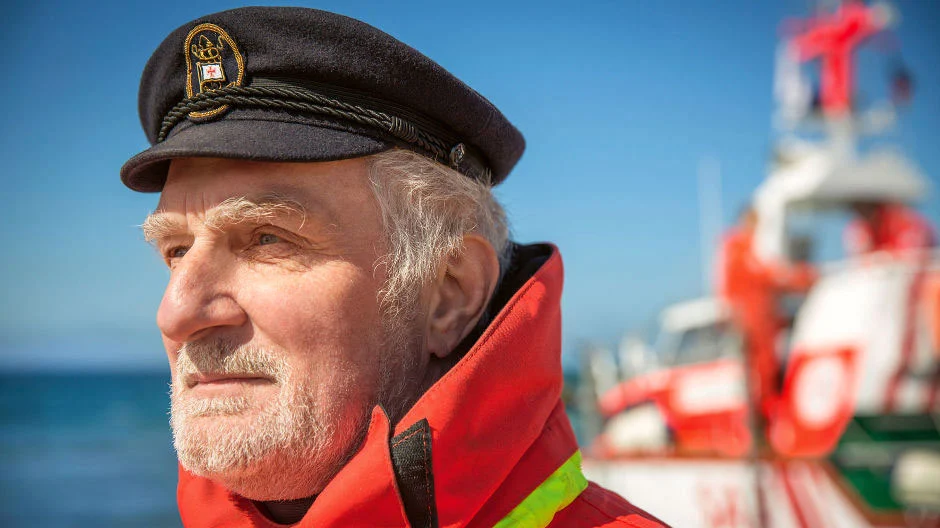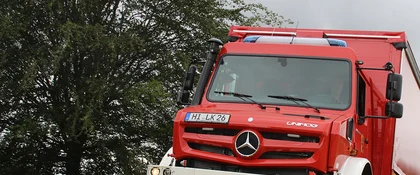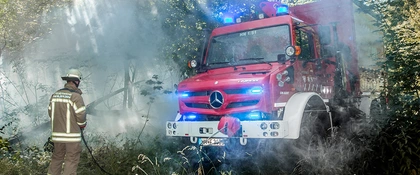Ready to slip: Unimog at Wustrow sea rescue station.
An operation every four hours, and every 16 hours a rescue from acute danger to life. These are the average figures of the German Maritime Rescue Service (DGzRS), in short: Deutsche Seenotrettung. 60 rescue cruisers and rescue boats are stationed at the North and Baltic Sea. In Wustrow, the helpers also have an all-terrain Unimog at their disposal, so that rescue boats can be brought into the water even without a harbour.
Alarm message directly to the mobile phone.
Every one of the 19 volunteer sea rescuers in Wustrow, on Fischland, which forms a peninsula with Darß and Zingst in the north-east of Germany, knows immediately what is going on when the alarm message from the Maritime Rescue Coordination Center in Bremen reaches their mobile phones. The first person to arrive at the 100-year-old station building immediately starts the engine of the Unimog U 2150 L. "The Unimog needs air for the brakes. And it starts immediately. Always. For 23 years now," says Karl-Heinz Priebe, foreman of the rescue station.
On the trailer, the all-terrain Unimog transports a highly specialised boat: "It's perfectly equipped, a good working tool. But nothing works without the truck," says Karl-Heinz Priebe. After all, in an emergency the boat first has to be taken over the beach to the water. A task, as if made for the four-wheel drive off-road professional from Mercedes-Benz.
